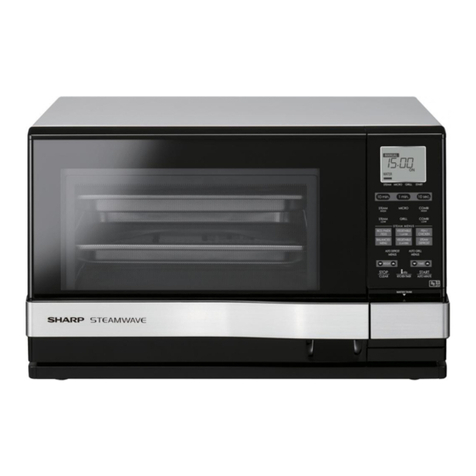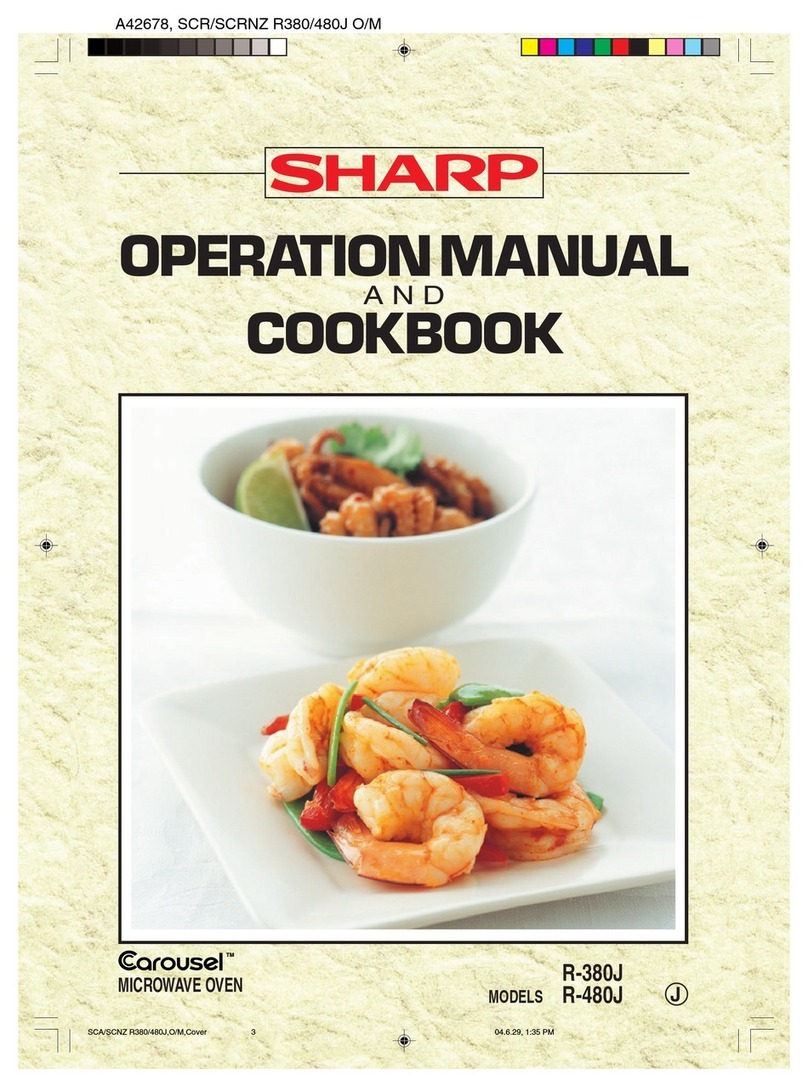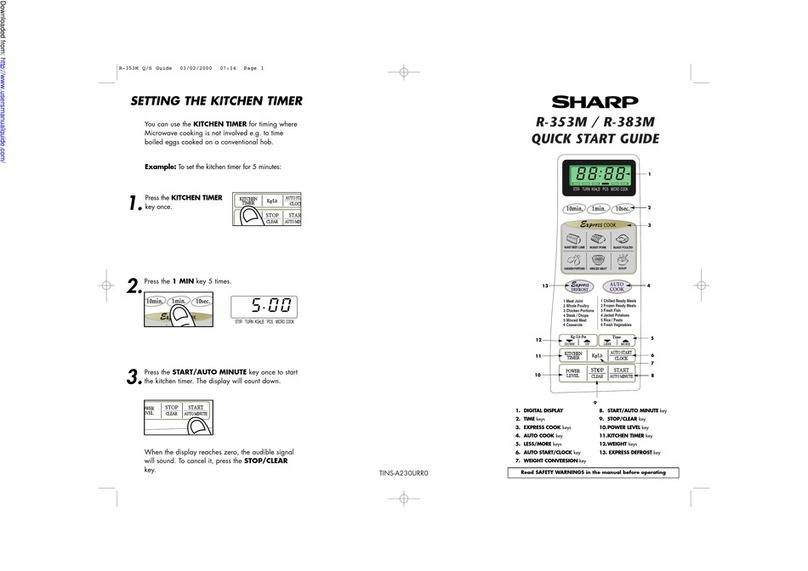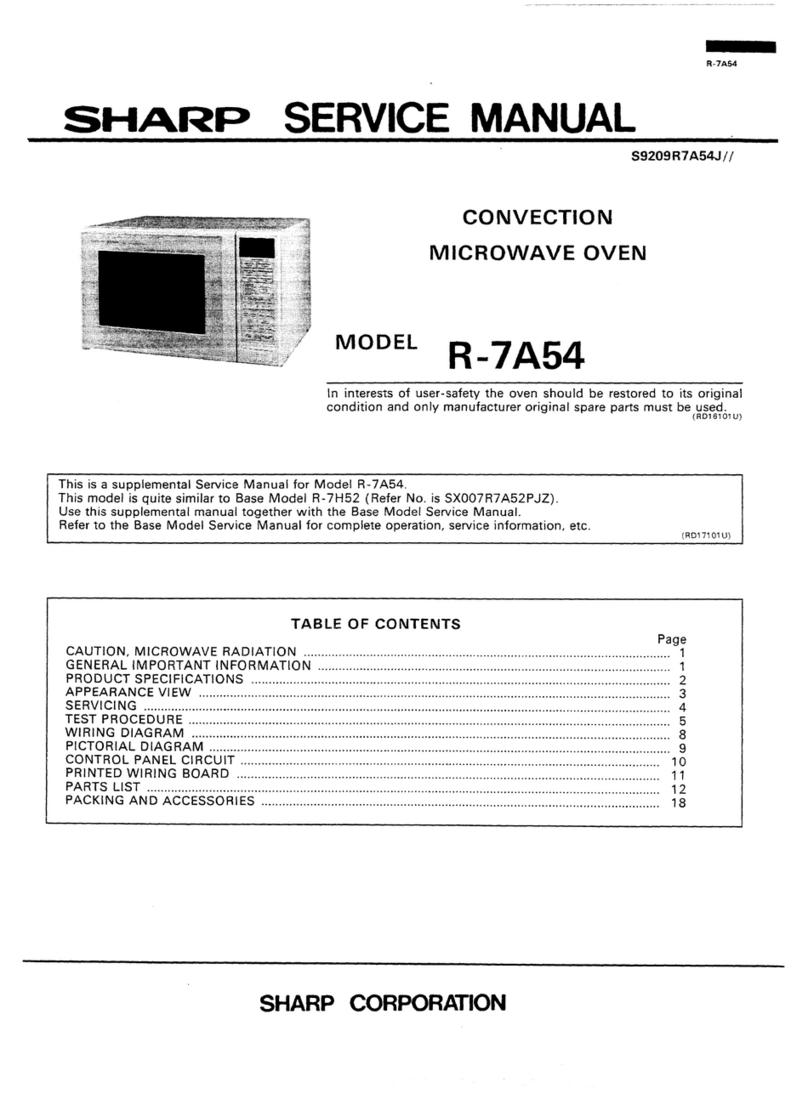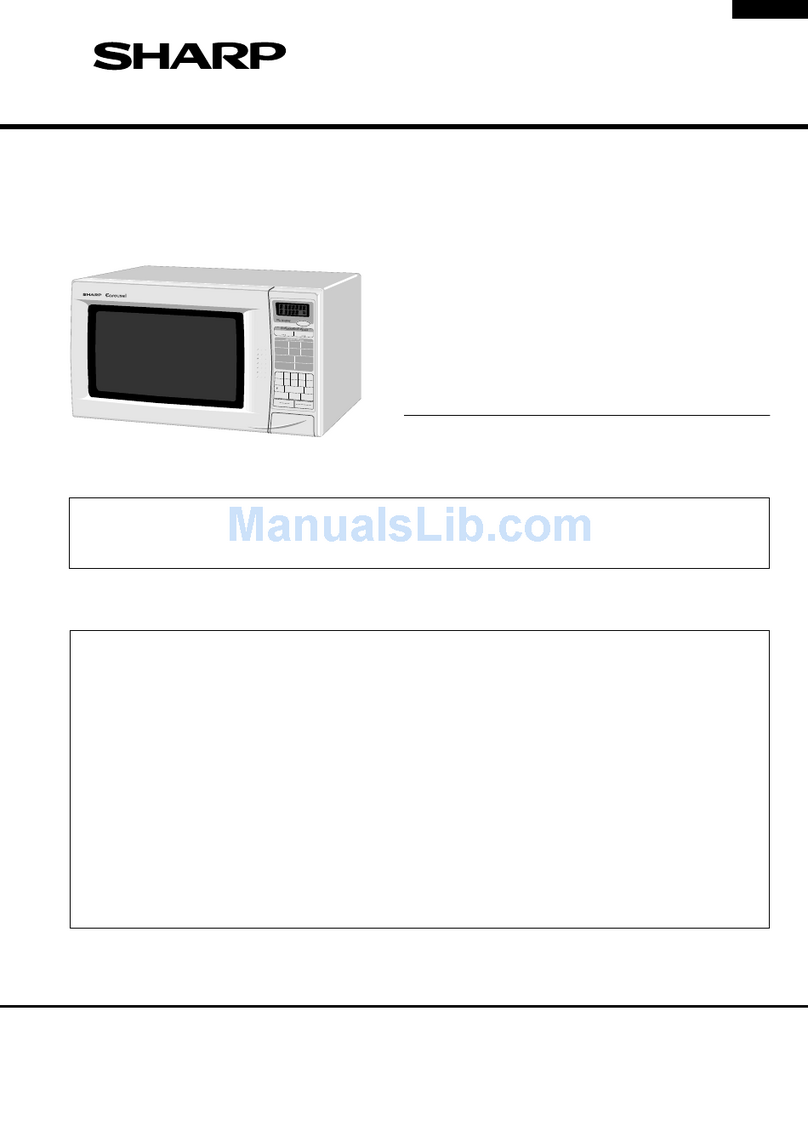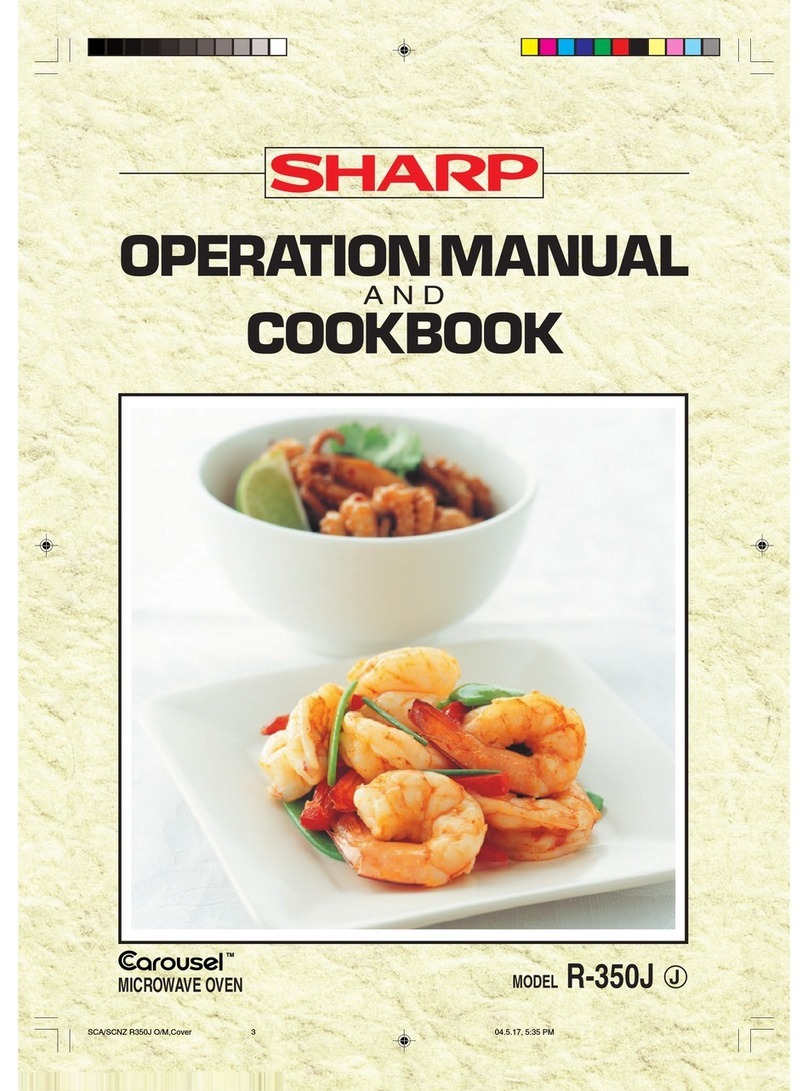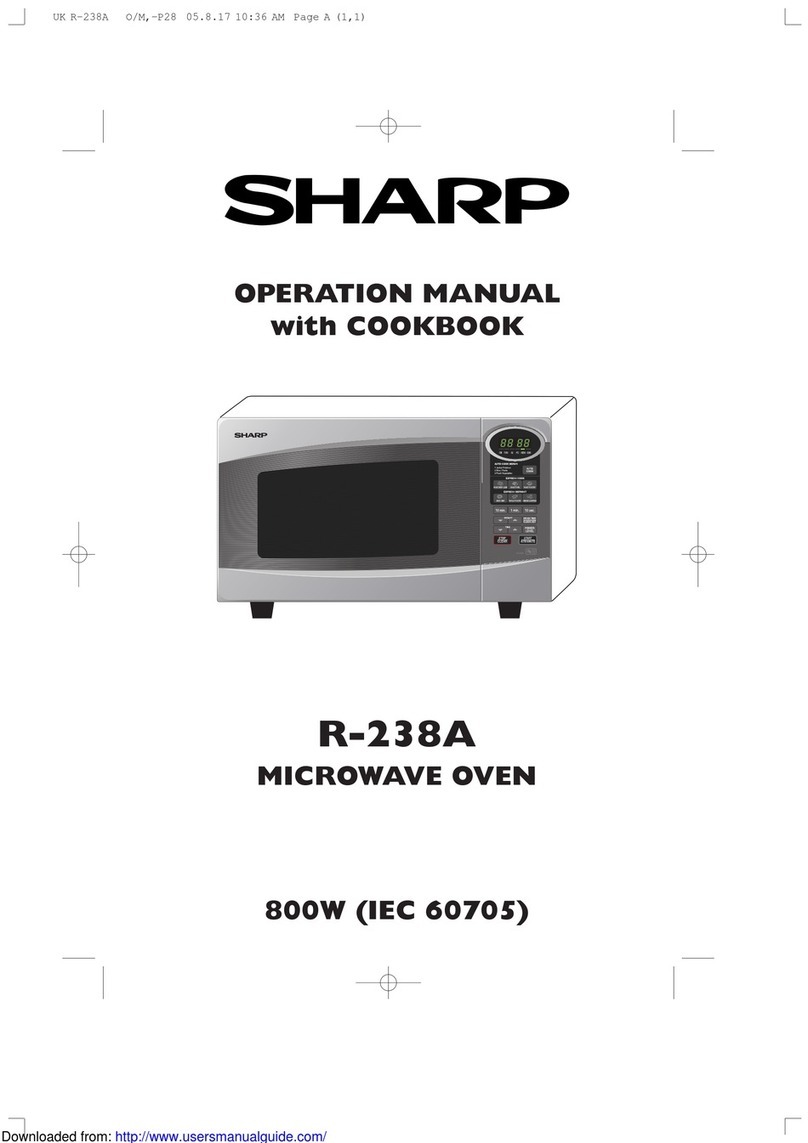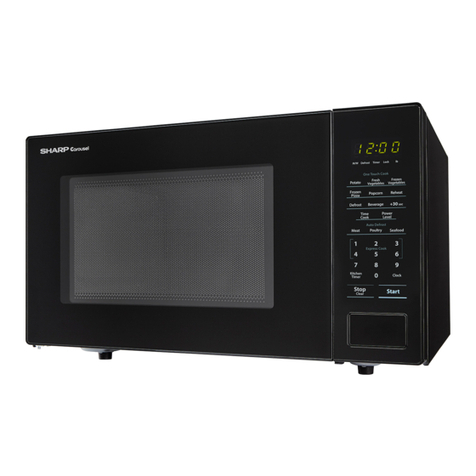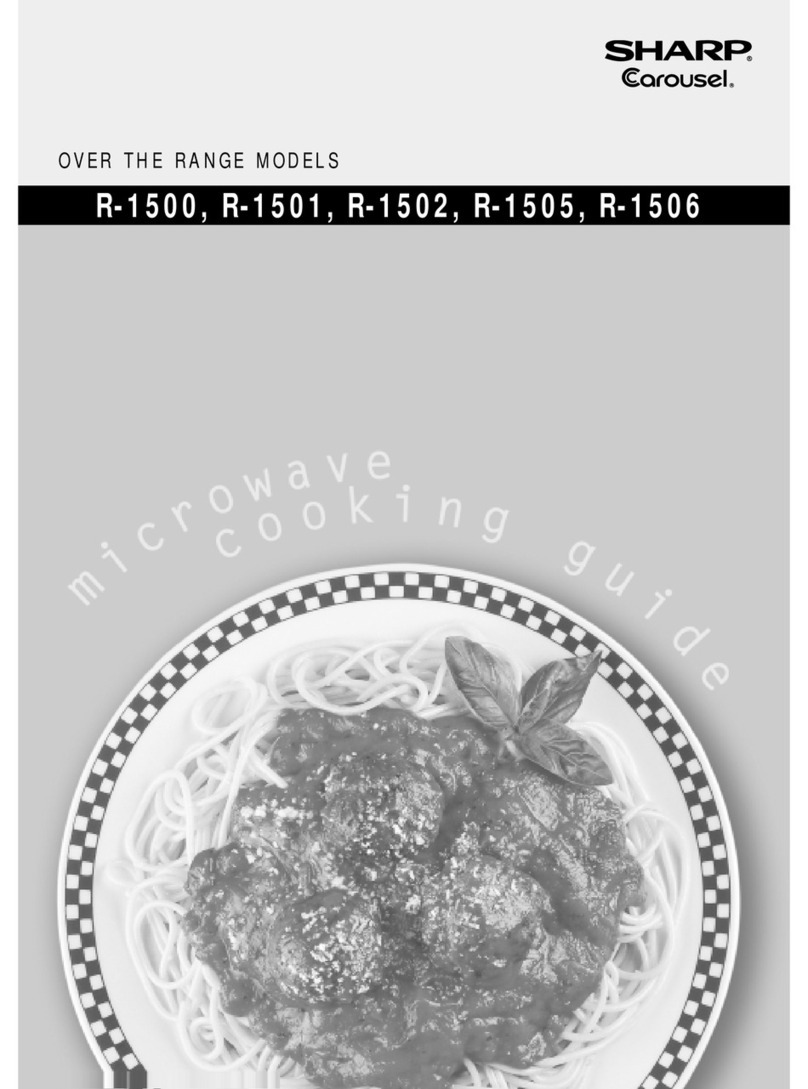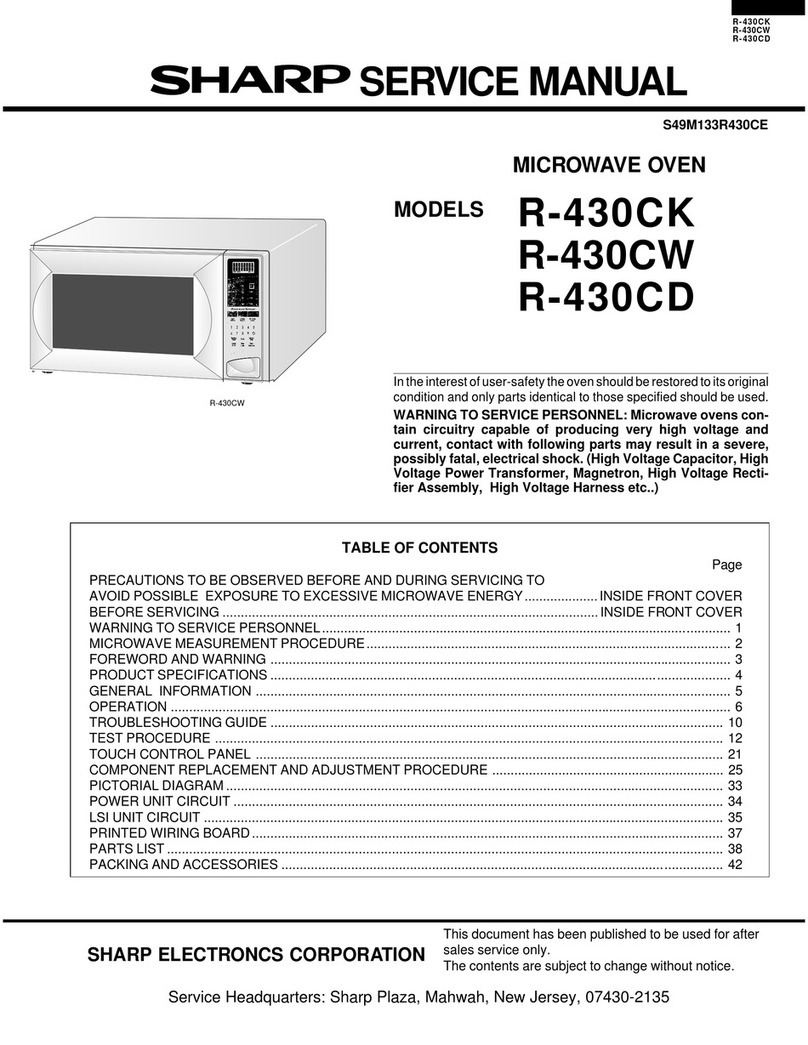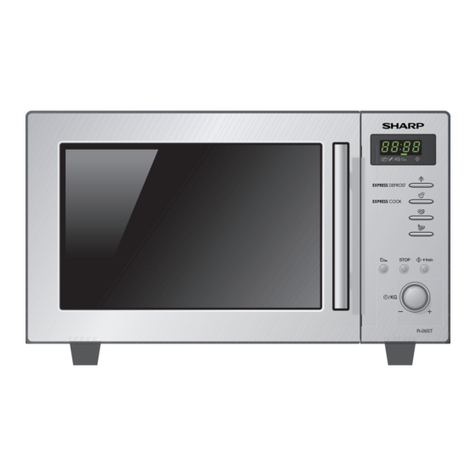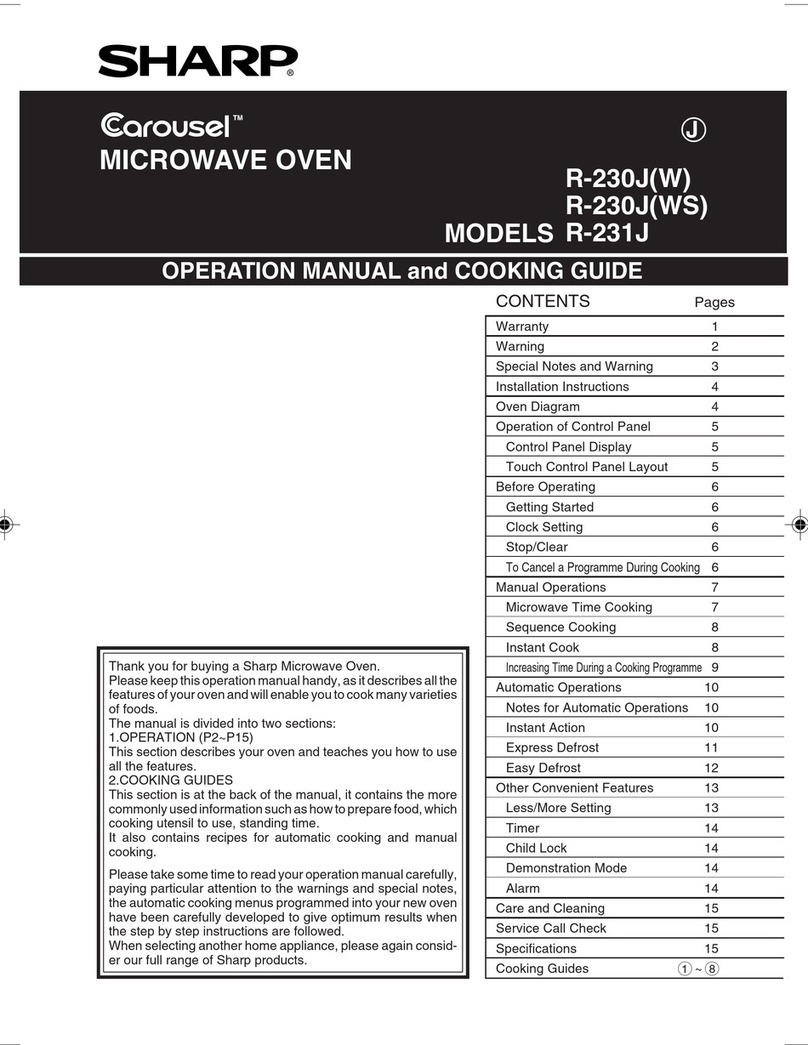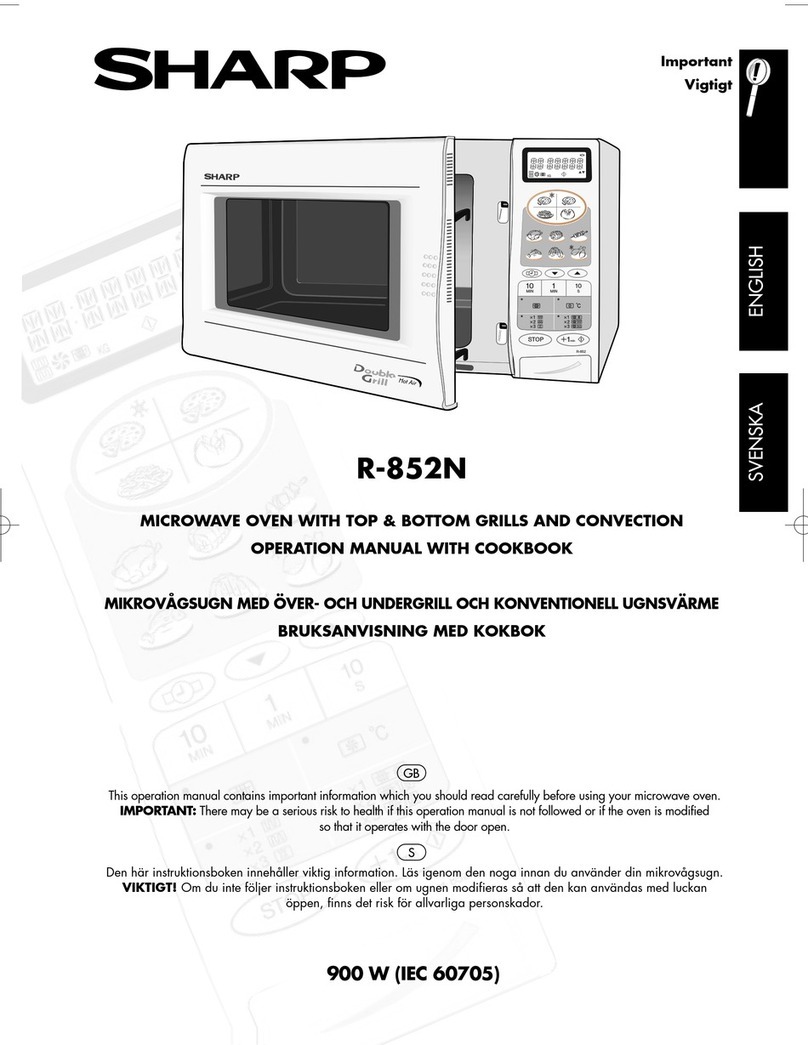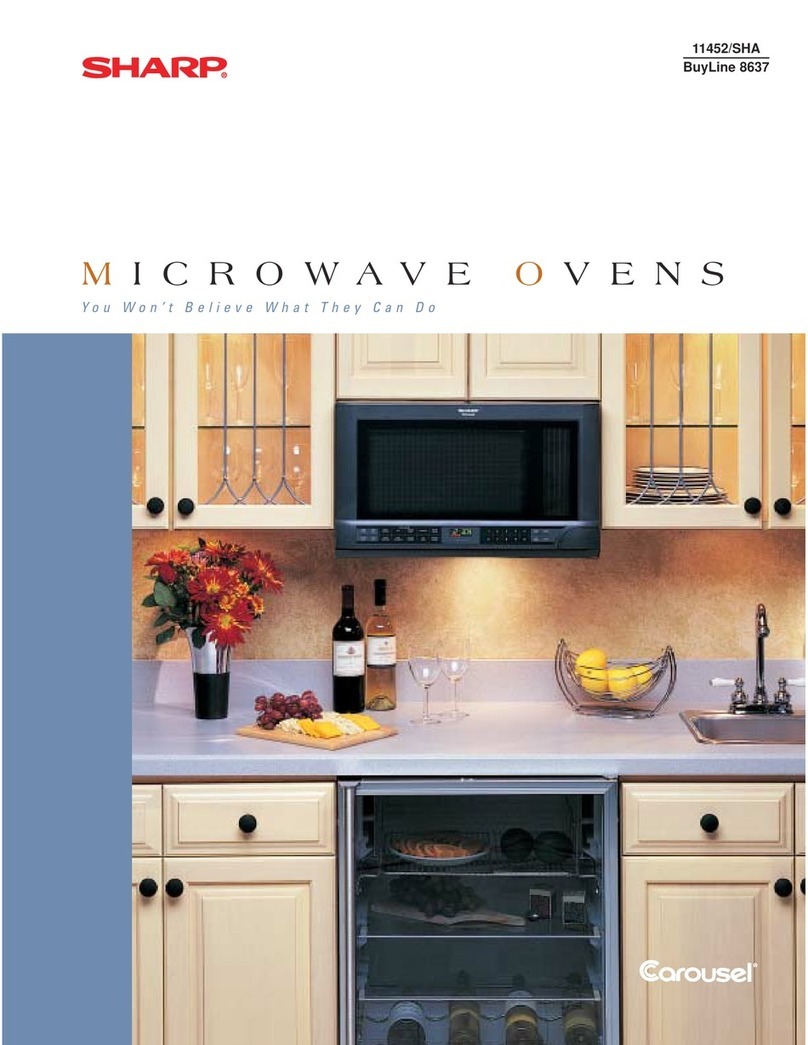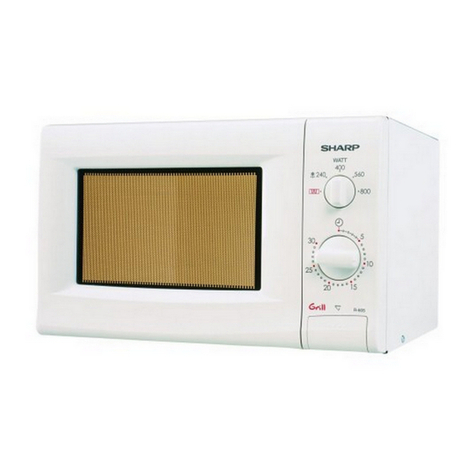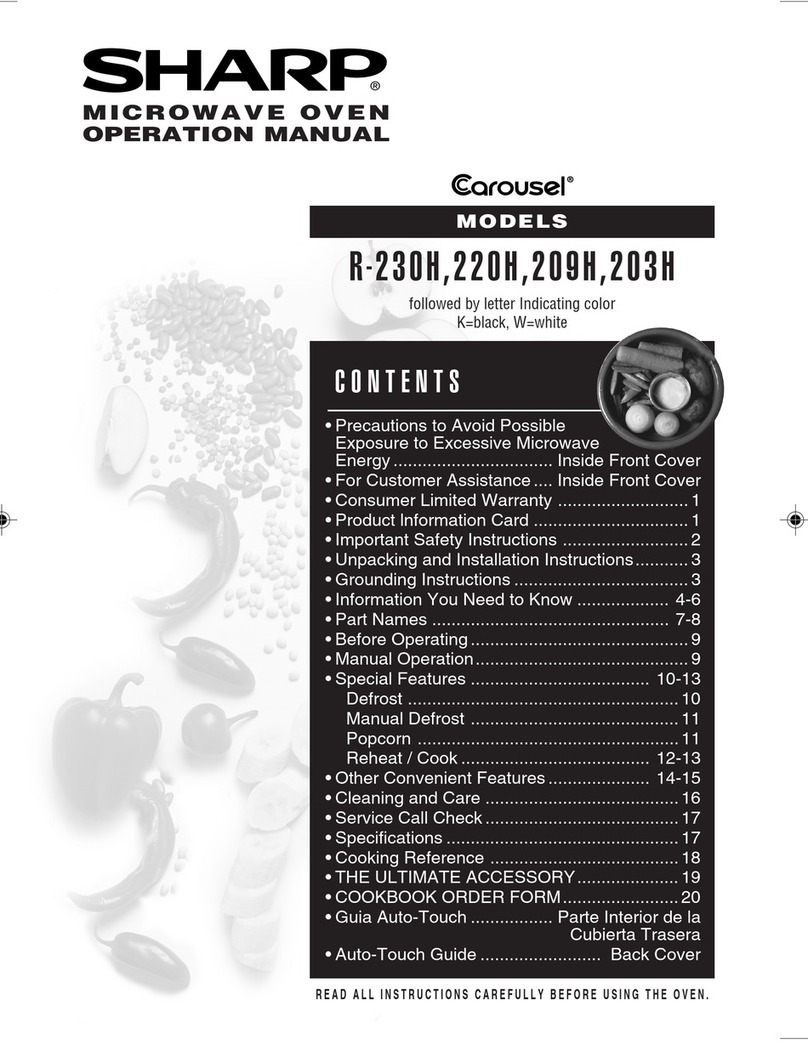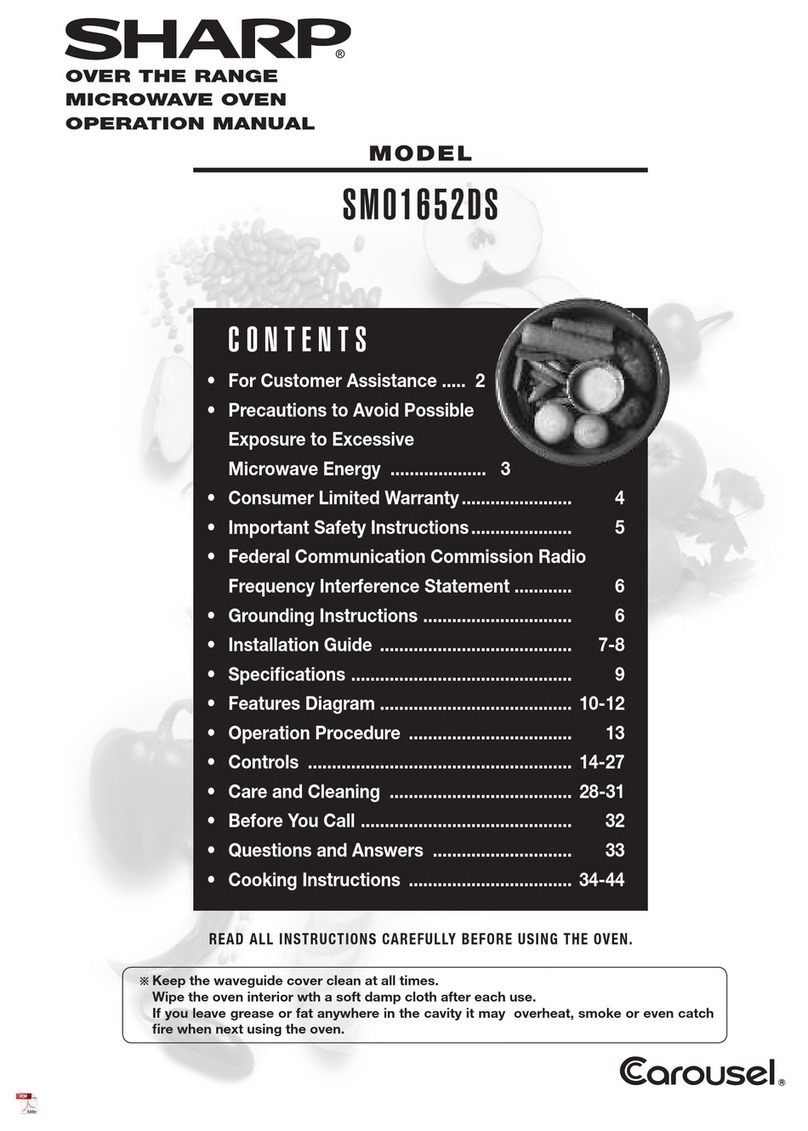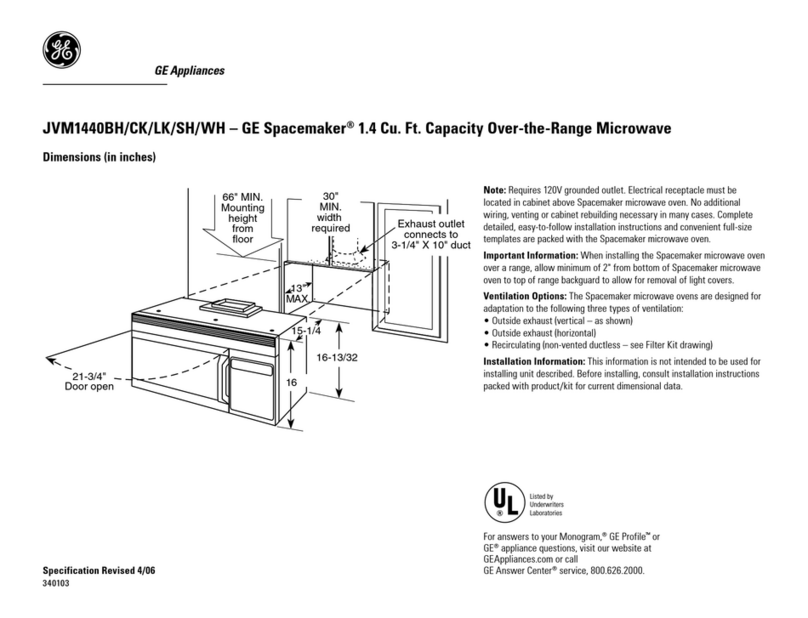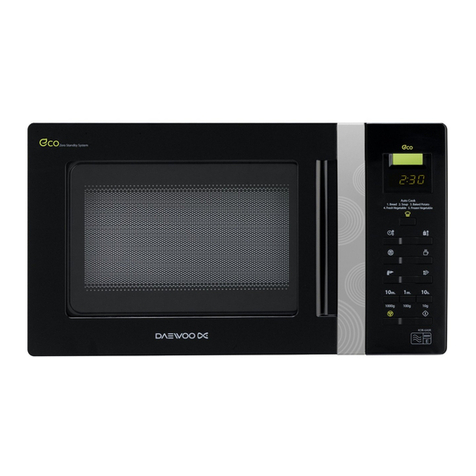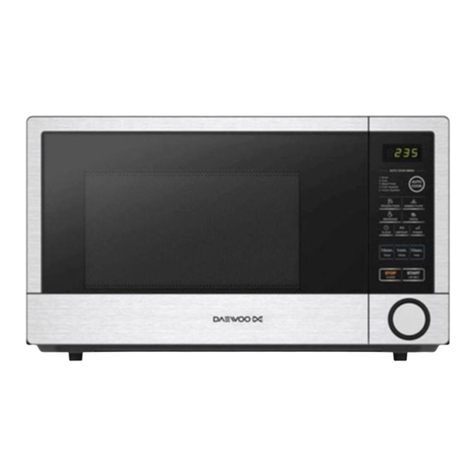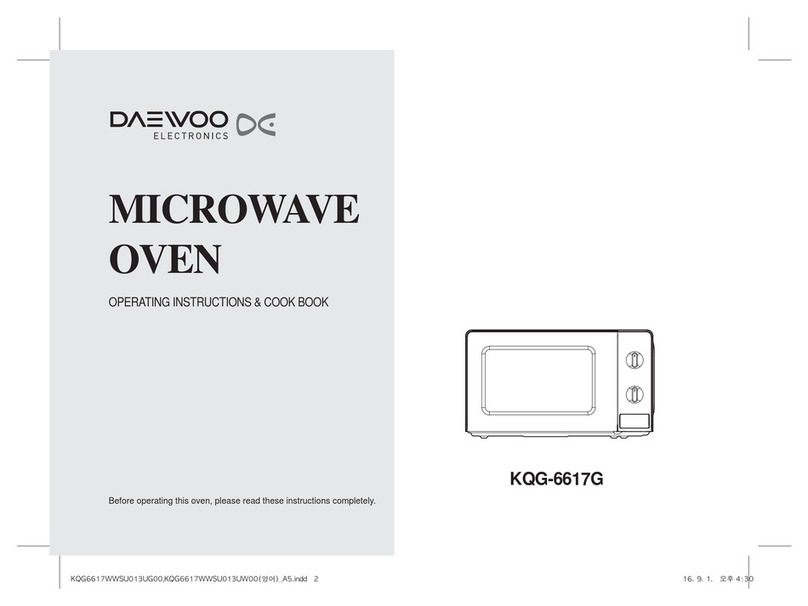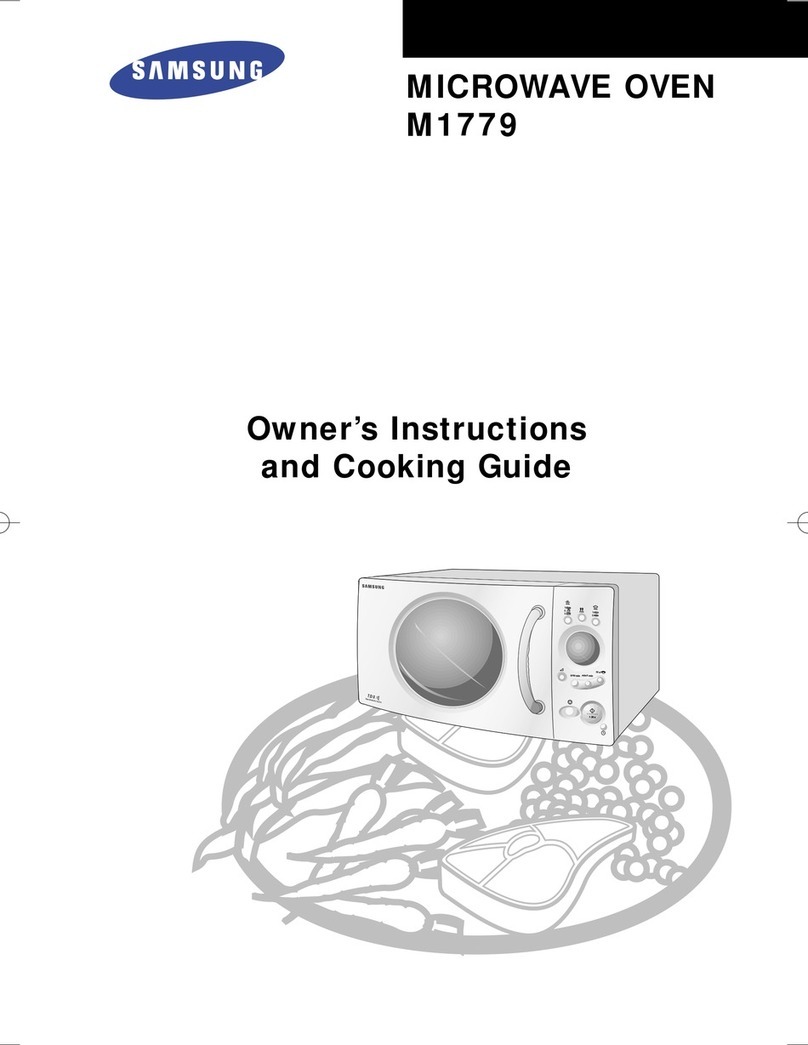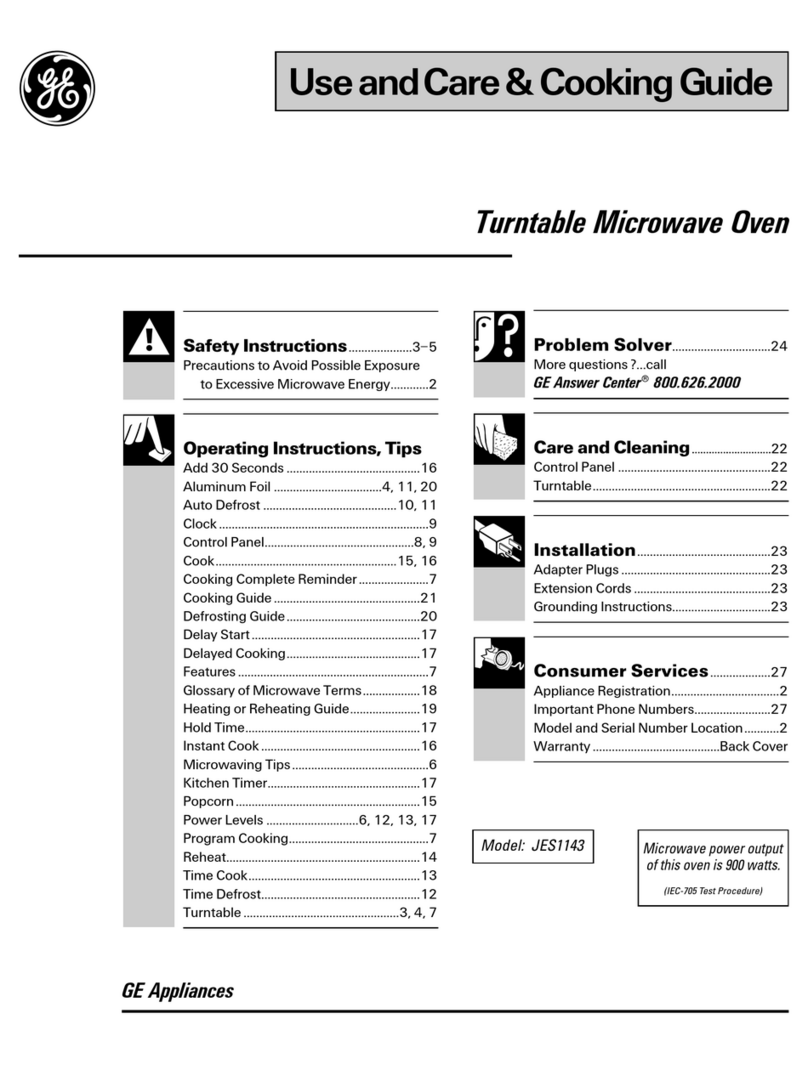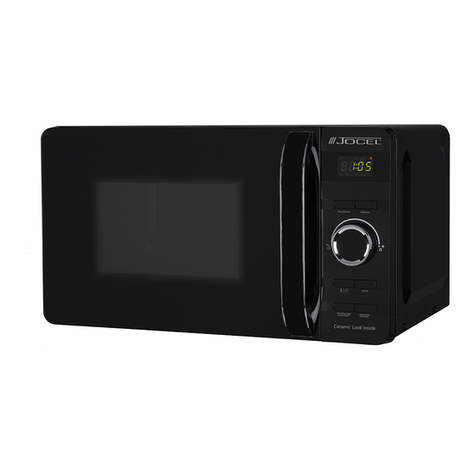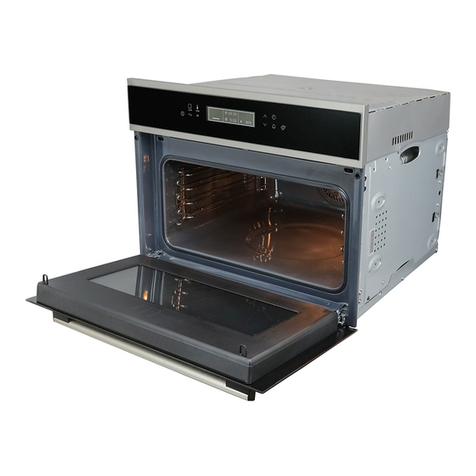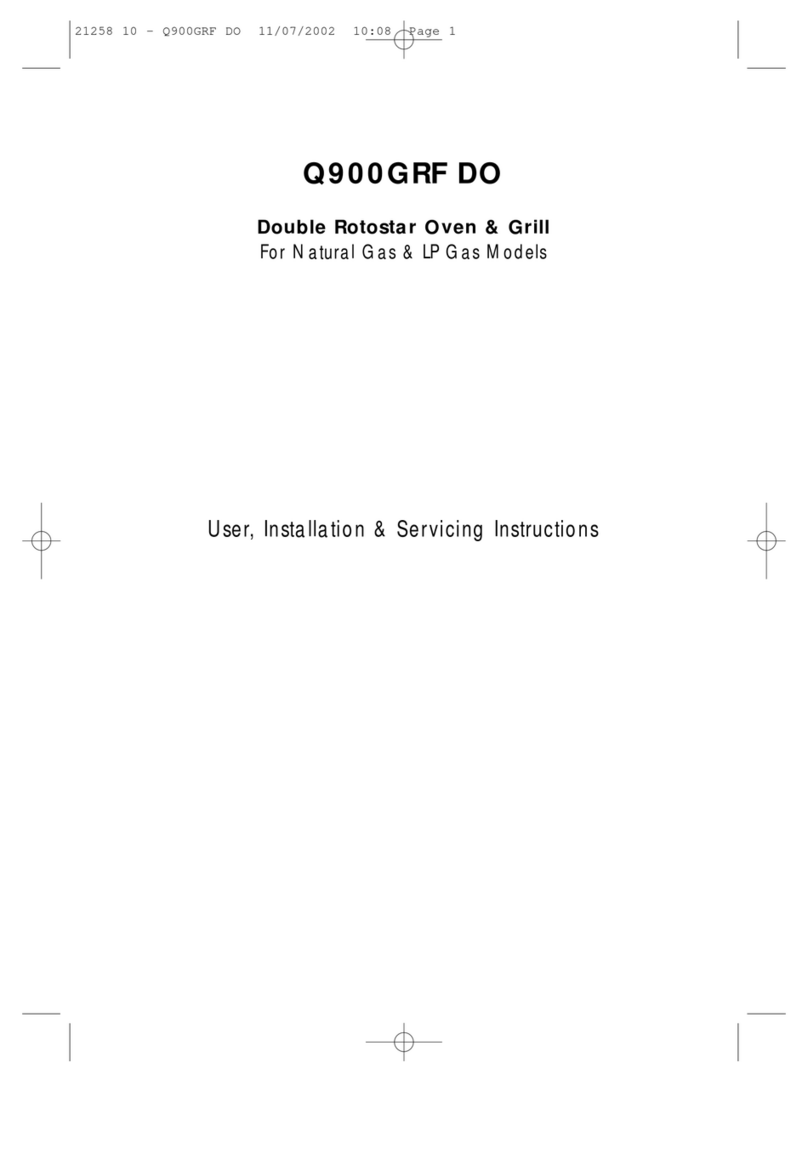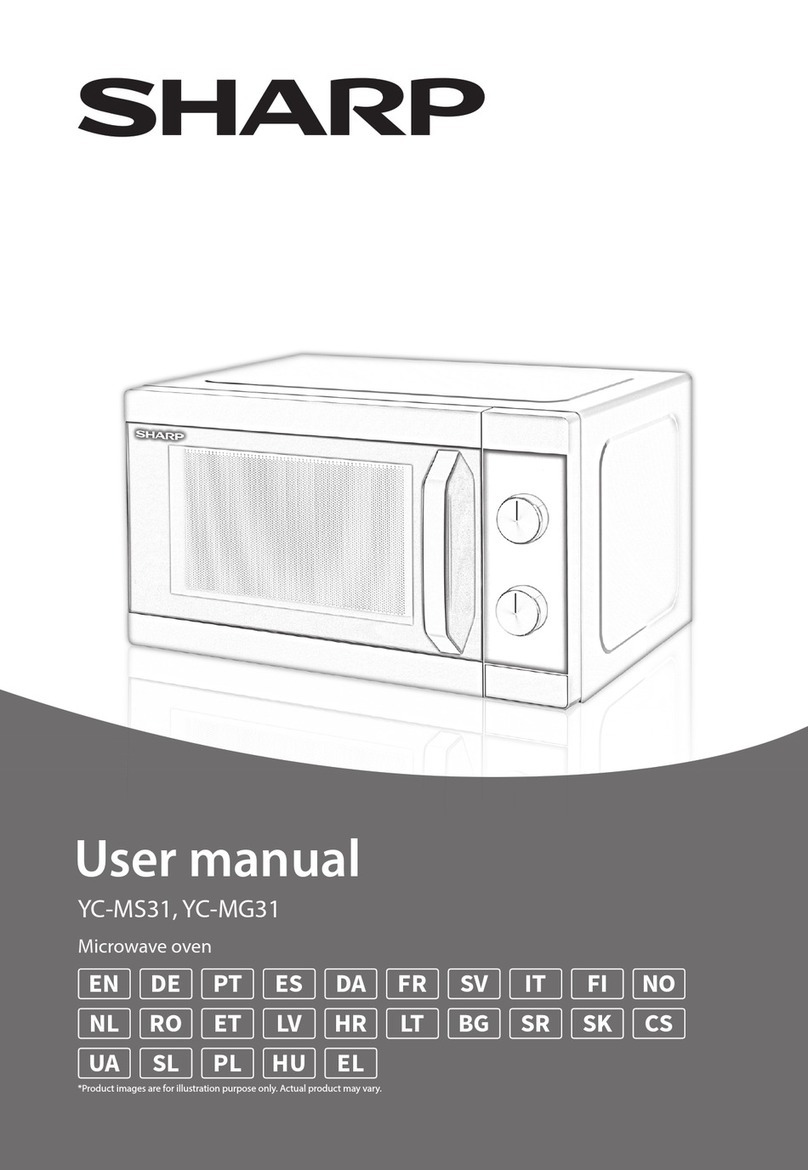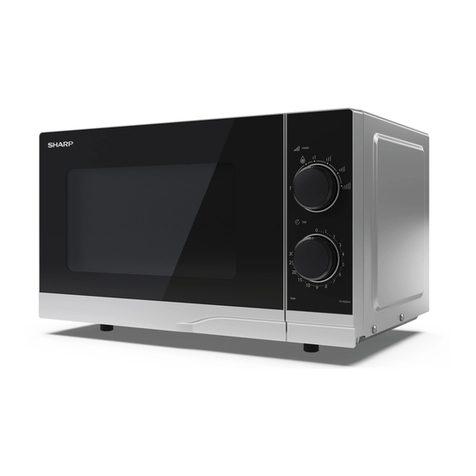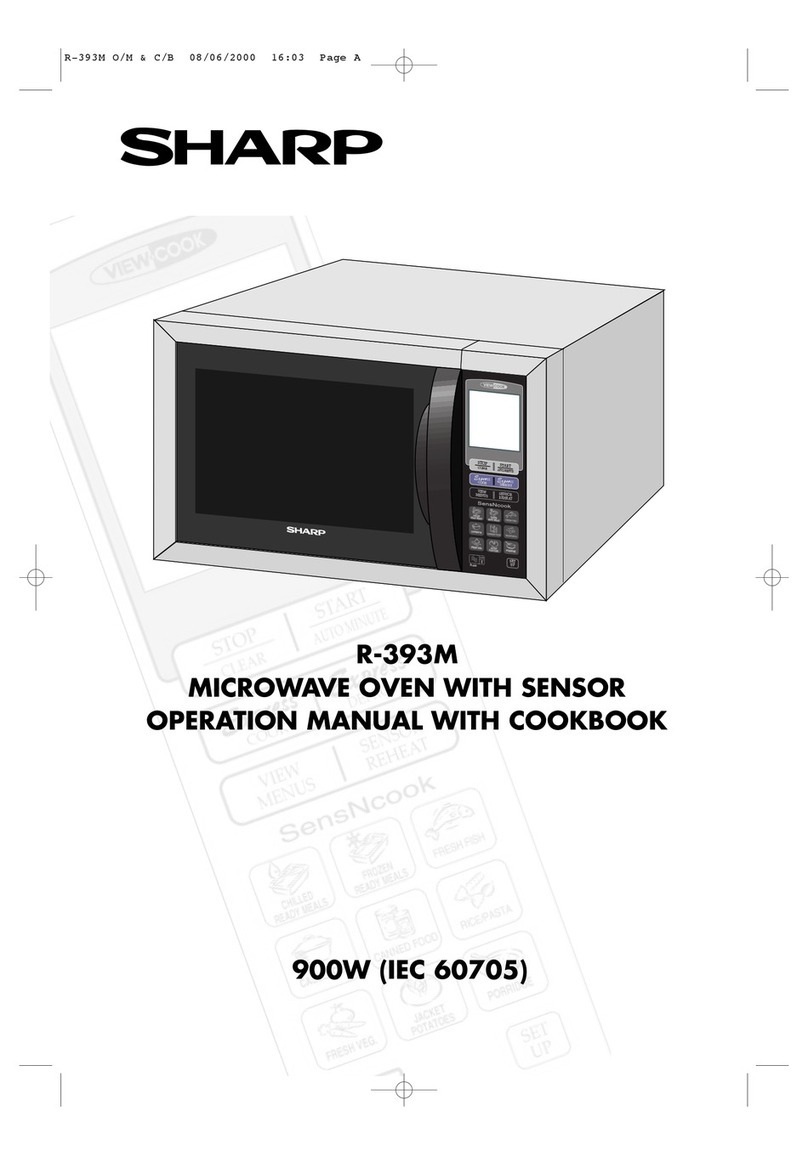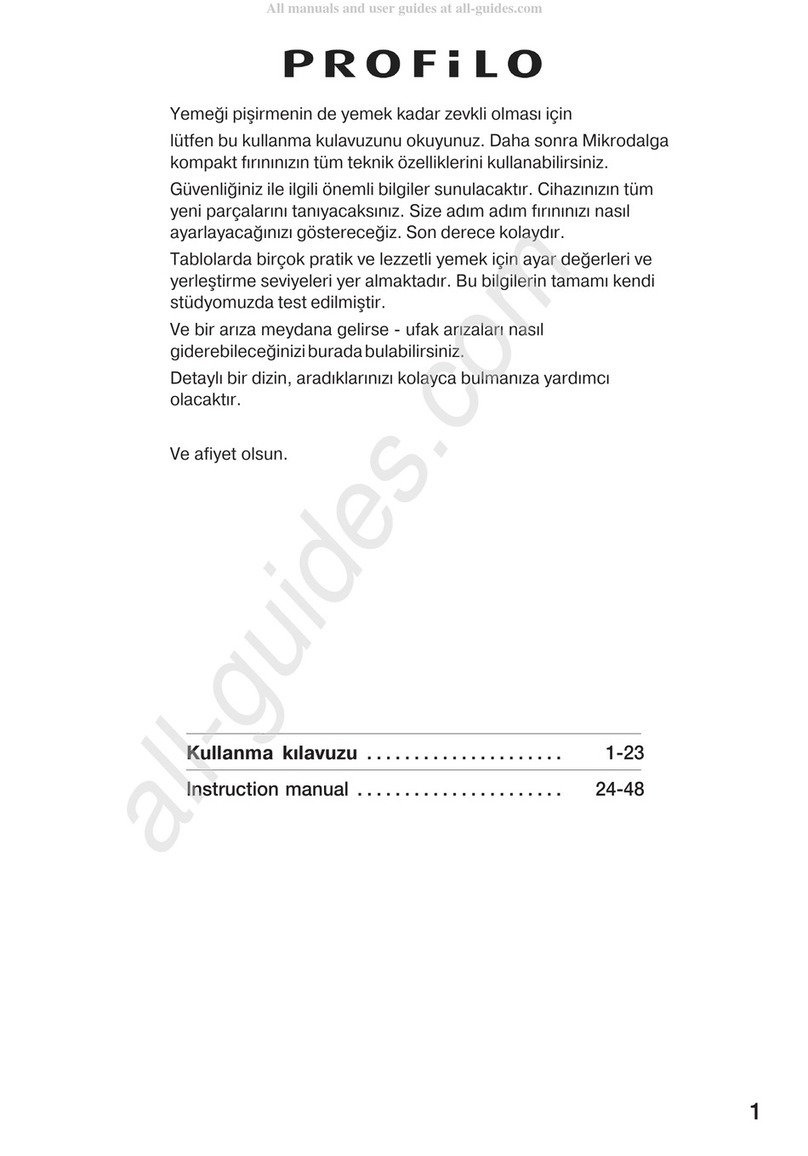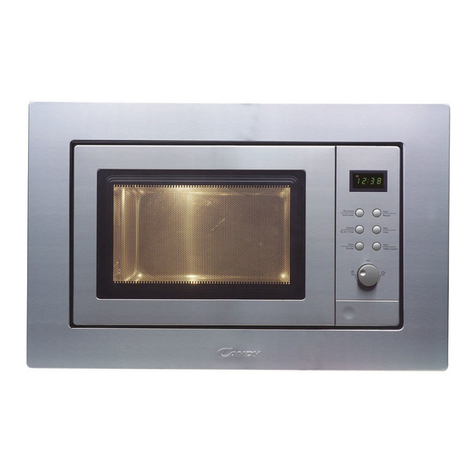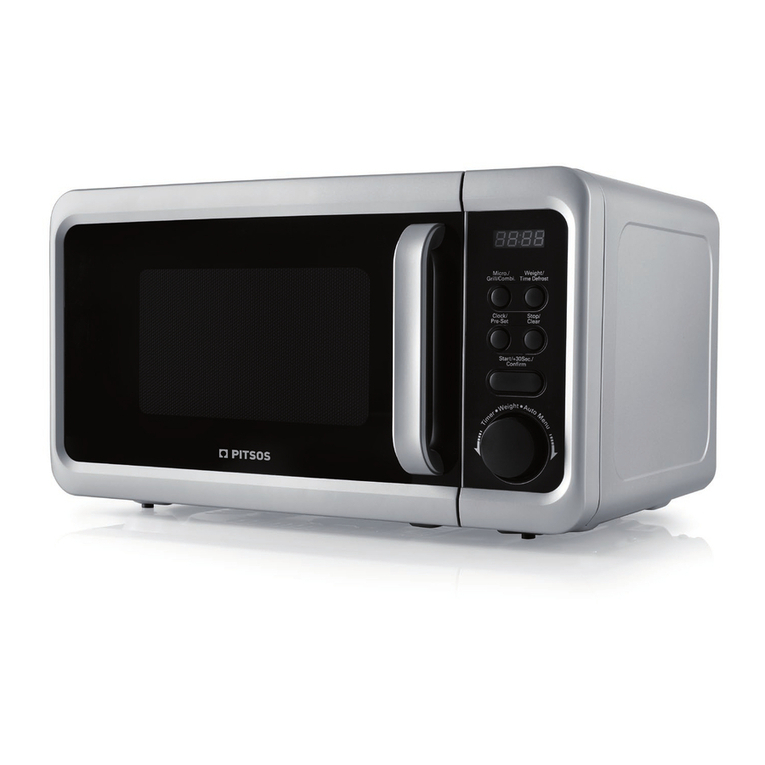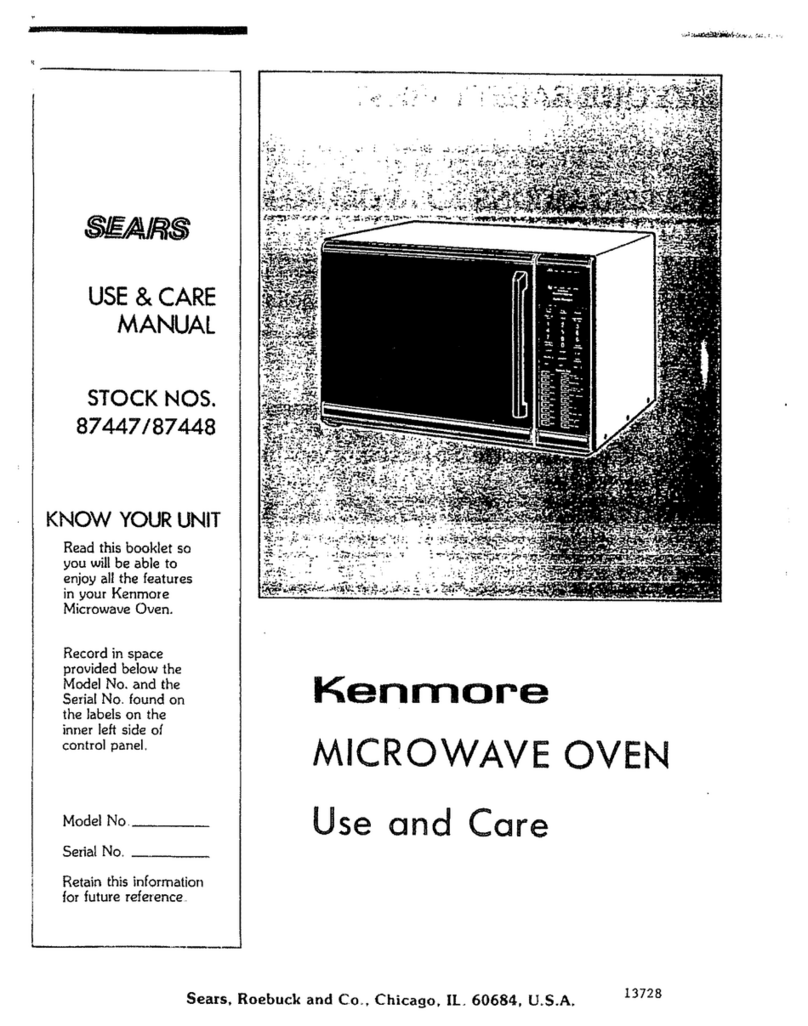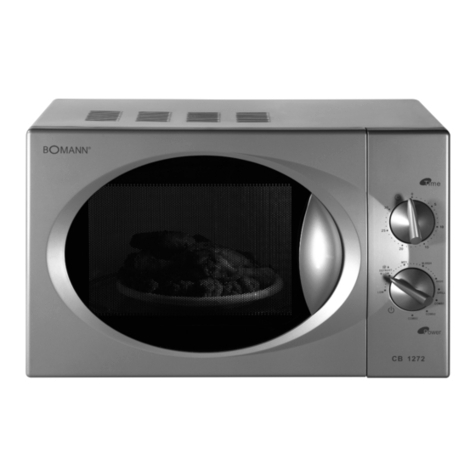R-7Hll
R-7H21
CONVECTION COOKING CONDITION
PREHEATING CONDITION (Figure O-3)
Program desired convection temperature by touching
the CONVECTION pad and the temp. pad.
When the START pad is touched, the following oper-
ations occur:
1. The coil of shut-off relays (RY2,RY3 and RY4) are
energized, the oven lamp, cooling fan motor,
turntable motor and convection motor are turned
2. y:e coil of relay (RYI) is energized by the control
unit. The damper is moved to the closed position,
opening the damper switch contacts.
The opening of the damper switch contacts sends
a signal to the LSI on the control unit de-energizing
the relay (RYI ) and opening the circuit to the
damper motor.
3. The coil of heater relay is energized by the control
unit and the mains supply voltage is added to the
convection heater.
4. When the oven temperature reaches the selected
preheat temperature, the following operations oc-
cur:
4-1. The heater relay is de-energized by the con-
trol unit temperature circuit and thermistor,
opening the circuit to the convection heater.
4-2. the oven will continue to function for 15
minutes, turning the heater on and off, as
needed to maintain the selected preheat tem-
perature.
The oven will shut-down completely after 15
minutes.
CONVECTION COOKING CONDITION
When the preheat temperature is reached, a beep signal
will sound indicating that the holding temperature has
been reached in the oven cavity. Open the door and
place the food to be cooked in the oven. Program de-
sired cooking time and convection temperature by
touching the NUMBER pad, CONVECTION pad and
Temperature pad. When the START pad is touched,
the following operation occur:
1.
2.
3.
4.
5.
The numbers of the digital readout start the count
down to zero.
The oven lamp, turntable motor, cooling fan motor
and convection motor are energized.
Heater relay is energized (if the cavity temperature
is lower than the selected temperature) and the
mains supply voltage is applied to the convection
heater to return’to the selected cooking temperature.
Upon completion of the cooking time, the audible
signal will sound, and oven lamp, turntable motor,
cooling fan motor and convection motor, are
de-energized. At the end of the convection cycle, if
the cavity air temperature is above 118 “C, the cir-
cuit to RY2 will be maintained (by the thermistor
circuit) to continue operation of the cooling fan
motor. The cavity air temperature drops below 118
“C, at which time the relay will be de-energized,
turning off the fan motor. Relay RY3 will however,
open as soon as the convection cycle has ended,
turning off the convection fan motor.
At the end of the convection cook cycle, shut-off
relay (RYl ) is energized turning on the damper
motor. The damper is returned to the open position,
closing the damper switch contacts which send a
signal to the control unit, de-energizing shut-off
relay (RYI ) .
AUTOMATIC MIX COOKING CONDITION
Program desired cooking time and temperature by
touching the number pads and the LOW MIX/BAKE
or HIGH MIX/ROAST pad
The LOW MIX/BAKE pad is preprogrammed for 180
“C with 40% micro wave power, while the HIGH
MIX/ROAST pad is preprogrammed for 200 “C with
30% microwave power. When the START pad is
touched, the following operations occur:
I. The numbers of the digital readout start the count
down to zero.
2. The shut-off relay (RY2, RY3 and RY4) are ener-
gized, turning on the oven lamp, turntable motor,
cooling fan motor and convection motor.
3. The shut-off relay (RYI ) is energized.
The damper door is closed from the open position.
4. The heater relay is energized, adding the mains
supply voltage to the convection heater.
5. Now, the oven is in the convection cooking con-
dition.
6. When the oven temperature reaches the selected
temperature, the following operations occur:
6-1. The power supply voltages is alternated to
the convection heater and power transfor-
mer.
6-2. The convection heater operates through the
heater relay contacts and the power trans-
former operates through the micro relay
contacts.
6-3. These are operated by the control unit to
supply alternately within a 32 second time
base, convection heat and microwave en-
ergy.
The relationship between the convection and micro-
wave power operations are as follows.
Note: The ON and OFF time ratio does not correspond
with the percentage of microwave power, be-
cause approx. 2 seconds are needed for heating
of the magnetron filament.
YkCROWAVE KIMR
-APPtO8.10%
f I
I I i
I ION I
I
lcmvEcJ OFF
I I
r -I
CONVECTION
TEMPERATURE
-ECU%
6
